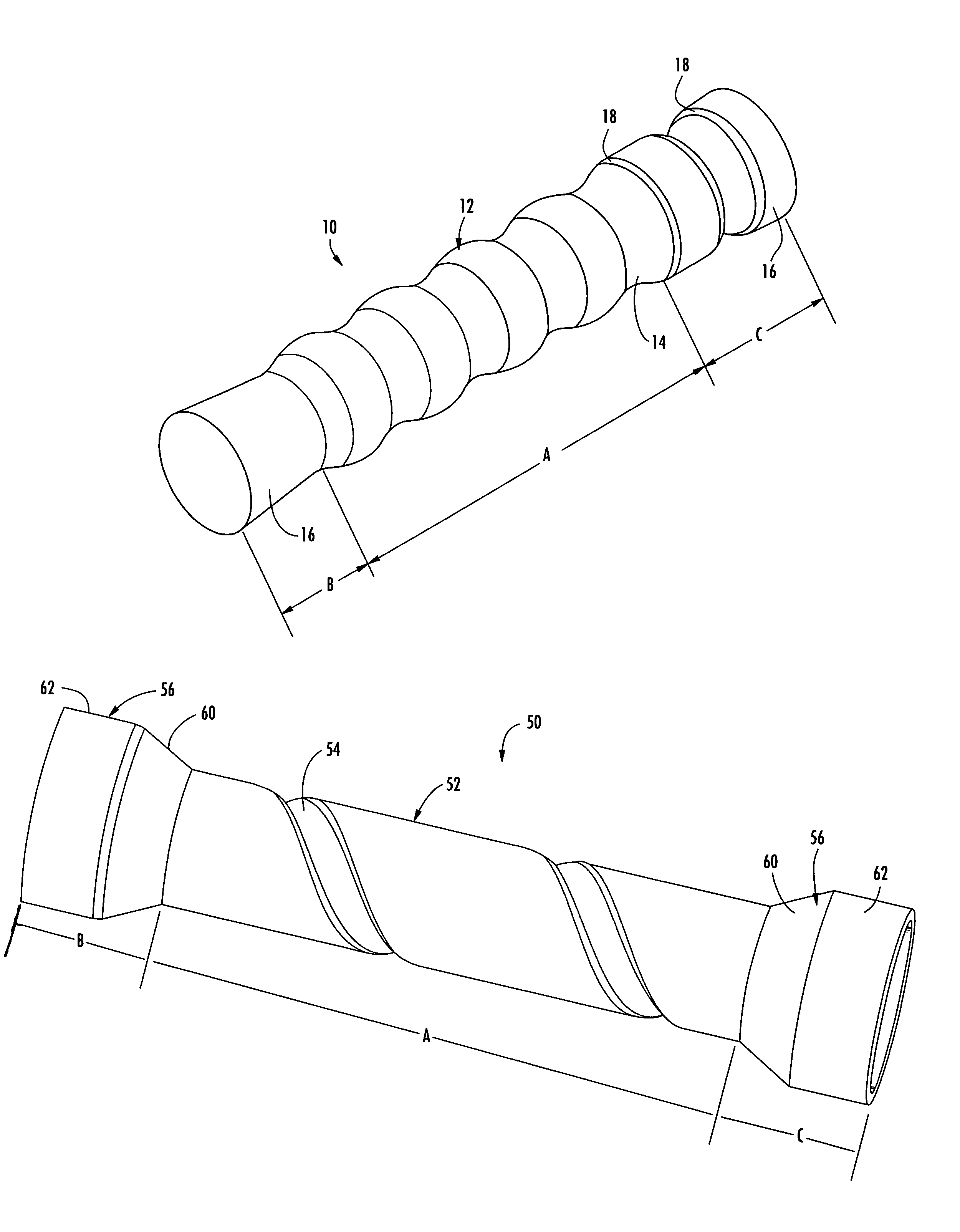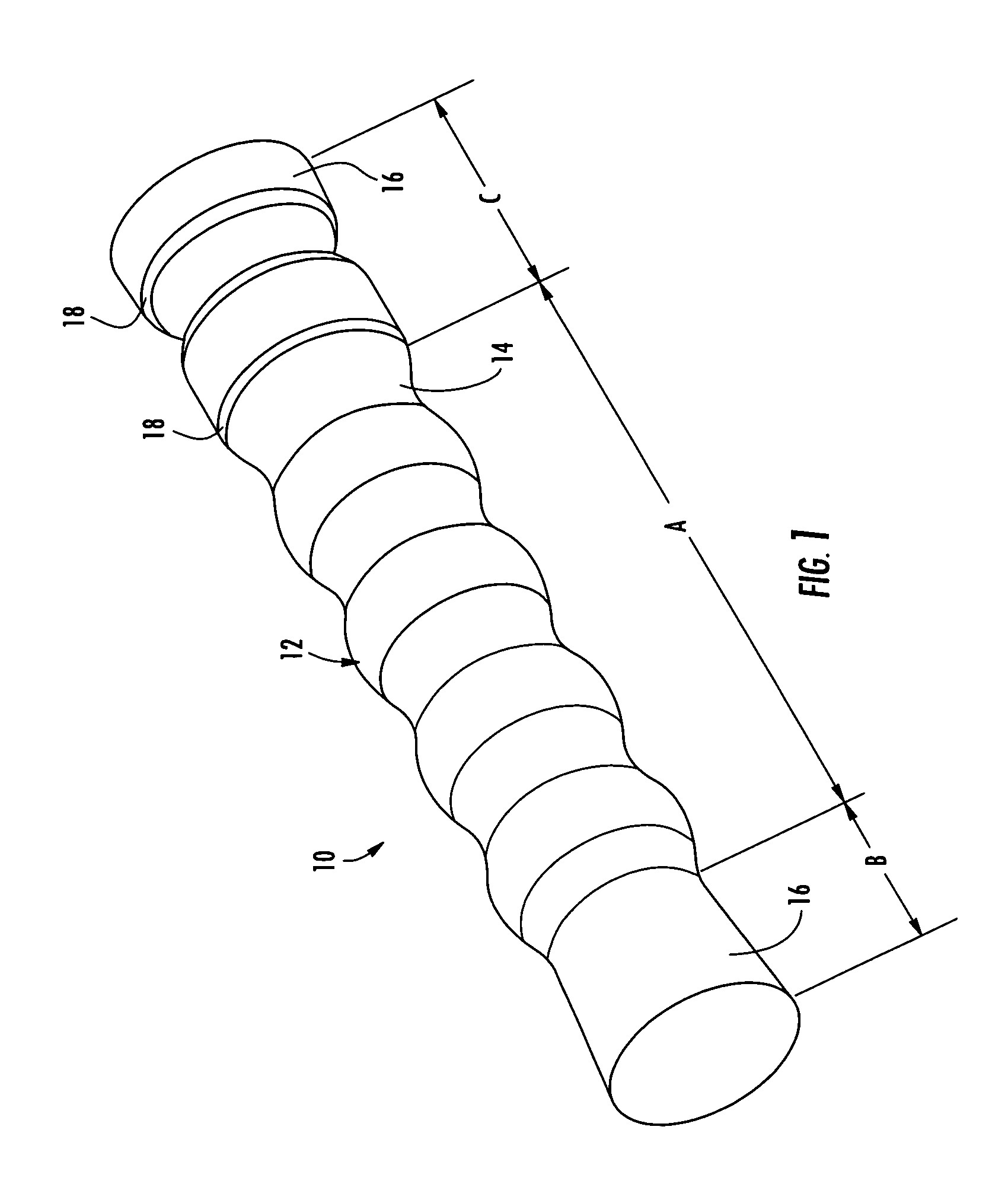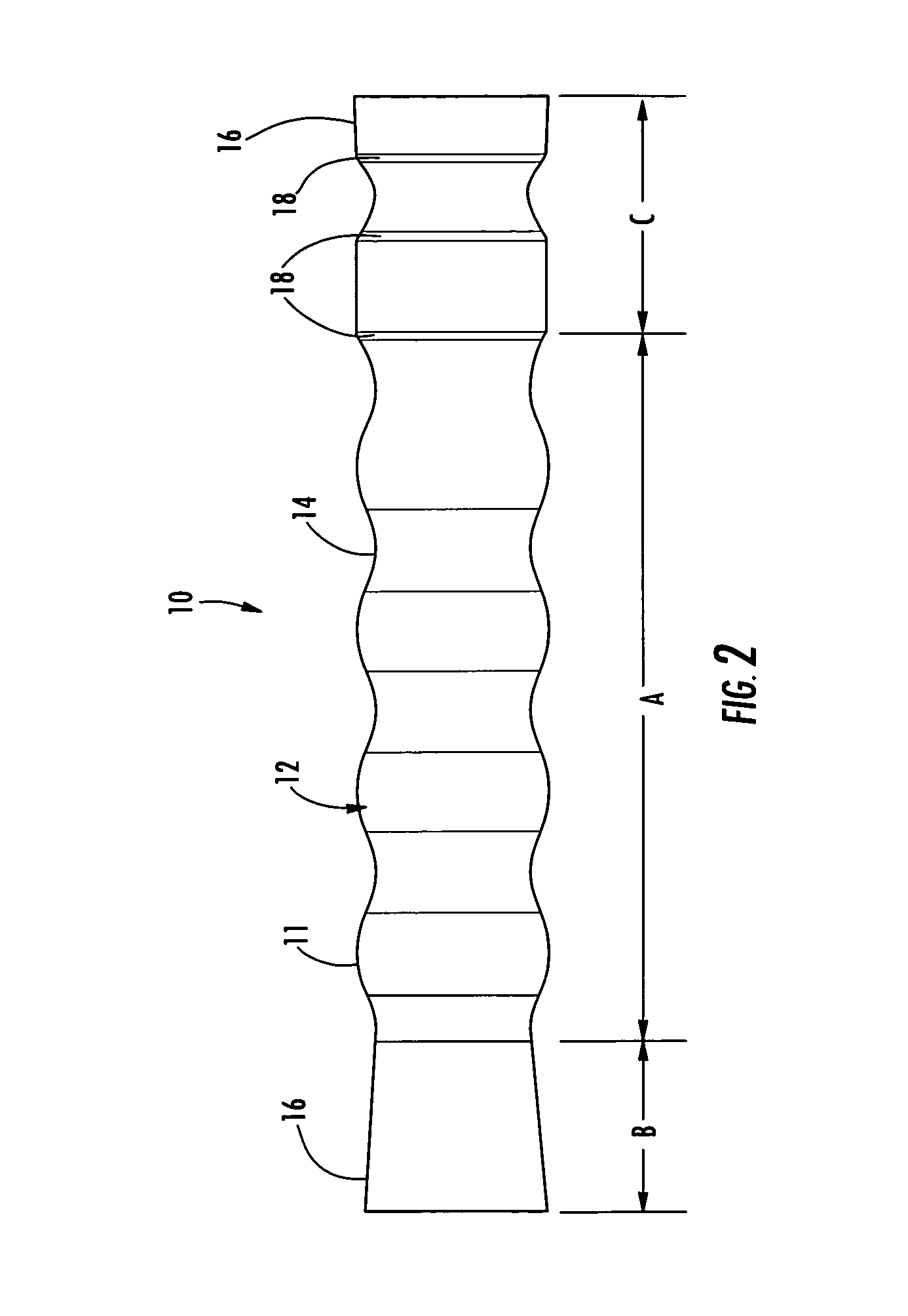Esophageal stent and associated method
a technology of esophageal stent and associated method, which is applied in the field of stents, can solve the problems of significant limitations in the effectiveness of stents, difficult esophageal stent stenting, and complications of esophageal stents, and achieve the effect of reducing migration
- Summary
- Abstract
- Description
- Claims
- Application Information
AI Technical Summary
Benefits of technology
Problems solved by technology
Method used
Image
Examples
Embodiment Construction
[0022]The present invention now will be described more fully hereinafter with reference to the accompanying drawings, in which some, but not all embodiments of the invention are shown. Indeed, this invention may be embodied in many different forms and should not be construed as limited to the embodiments set forth herein; rather, these embodiments are provided so that this disclosure will satisfy applicable legal requirements. Like numbers refer to like elements throughout.
[0023]With reference to FIG. 1, an esophageal stent 10 is shown. The stent 10 includes a tubular member 12 having a plurality of stabilization members 14 defined circumferentially therein. Generally, the stent 10 is positioned within the lumen adjacent to a target area, while the stabilization members 14 are configured to adapt to the muscular contractions of the esophagus thereby reducing migration of the stent 10 and the incidence of infolding of the tubular member 12.
[0024]Thus, the esophageal stent 10 is capab...
PUM
 Login to View More
Login to View More Abstract
Description
Claims
Application Information
 Login to View More
Login to View More - R&D
- Intellectual Property
- Life Sciences
- Materials
- Tech Scout
- Unparalleled Data Quality
- Higher Quality Content
- 60% Fewer Hallucinations
Browse by: Latest US Patents, China's latest patents, Technical Efficacy Thesaurus, Application Domain, Technology Topic, Popular Technical Reports.
© 2025 PatSnap. All rights reserved.Legal|Privacy policy|Modern Slavery Act Transparency Statement|Sitemap|About US| Contact US: help@patsnap.com



